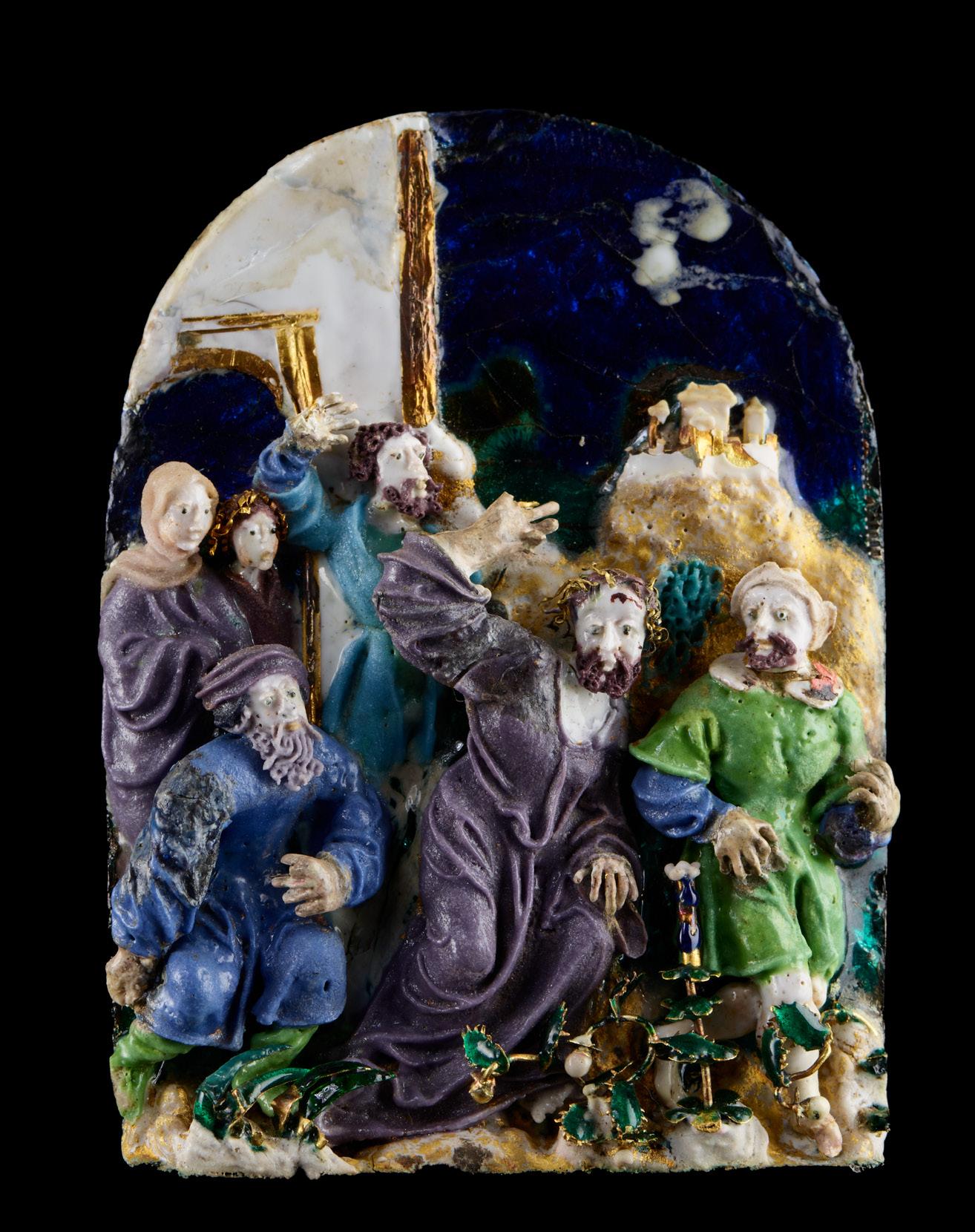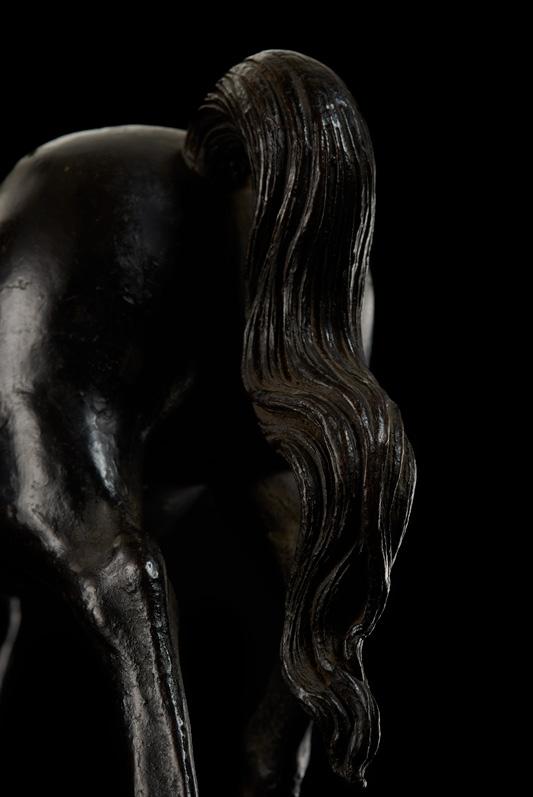
4 minute read
13 Trotting Horse
from JB Test 01/22
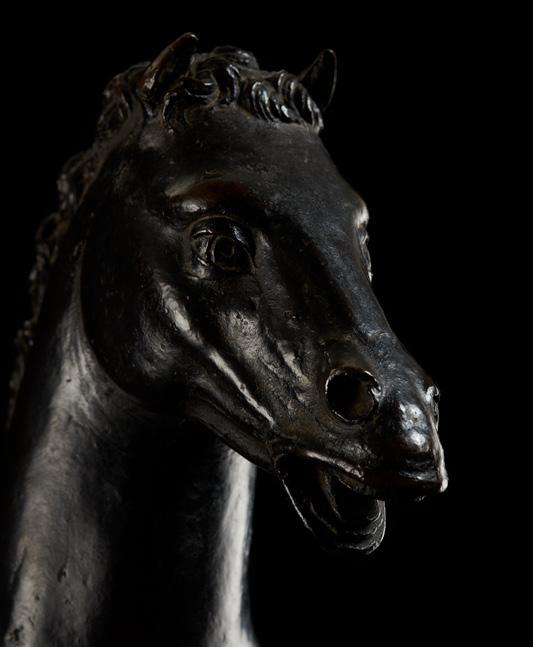
13
Advertisement
During this period he repeatedly works on a design for the equestrian memorial that, at Ludovico Sforza’s request, was then to be much larger than life-size with a height of seven metres. Numerous studies and sketches still exist that interestingly also show the piaffe step sequence. Together with Francesco di Giorgio Martini, Leonardo visits the city of Pavia in 1490 where he is deeply impressed by the so-called ‘Regisole’ equestrian monument mentioned above. He writes: ”What one has to marvel at in particular about the horse in Pavia is its movement … its trot is precisely like the trot of a living horse.” (Cited in Reti, 1974, p. 94). A drawing is held at Windsor Castle that Leonardo could have made of this monument. It shows a trotting horse that is lifting its front left and rear right legs. After seeing the ‘Regisole’, Leonardo switches from his original design for a rearing horse back to one trotting. He develops innovative casting and modelling methods in order to be able to cast a horse four times its real size. He describes this in detail in the Codex Madrid II, which he illustrates with drawings. He is, however, never able to turn his ingenious concept into reality. The bronze for the cast that had already been delivered is used instead to make cannons to fight the French King Charles VIII. After Ludovico Sforza’s defeat, Leonardo leaves Milan in 1500.
It is possible that Leonardo also created a bronze model of a striding horse with which our unknown artist may have been familiar. It is known, for example, that Leoni Leoni (1509 – 1590) of Milan owned several of Leonardos horse bozzetti. Whether a comparable horse was among these can no longer be verified. The lively execution of its step, the precisely modelled head with its open mouth and snorting nostrils, as well as the detailing of the hooves suggest an extremely talented artist. These could include a master sculptor in the circle of the Court of Milan or a successor to Andrea del Verrocchio of Florence. The technical execution of this single cast could only been achieved by an experienced craftsman who certainly would not have been working on his own but would have received an apprenticeship within the circle of artists already mentioned.
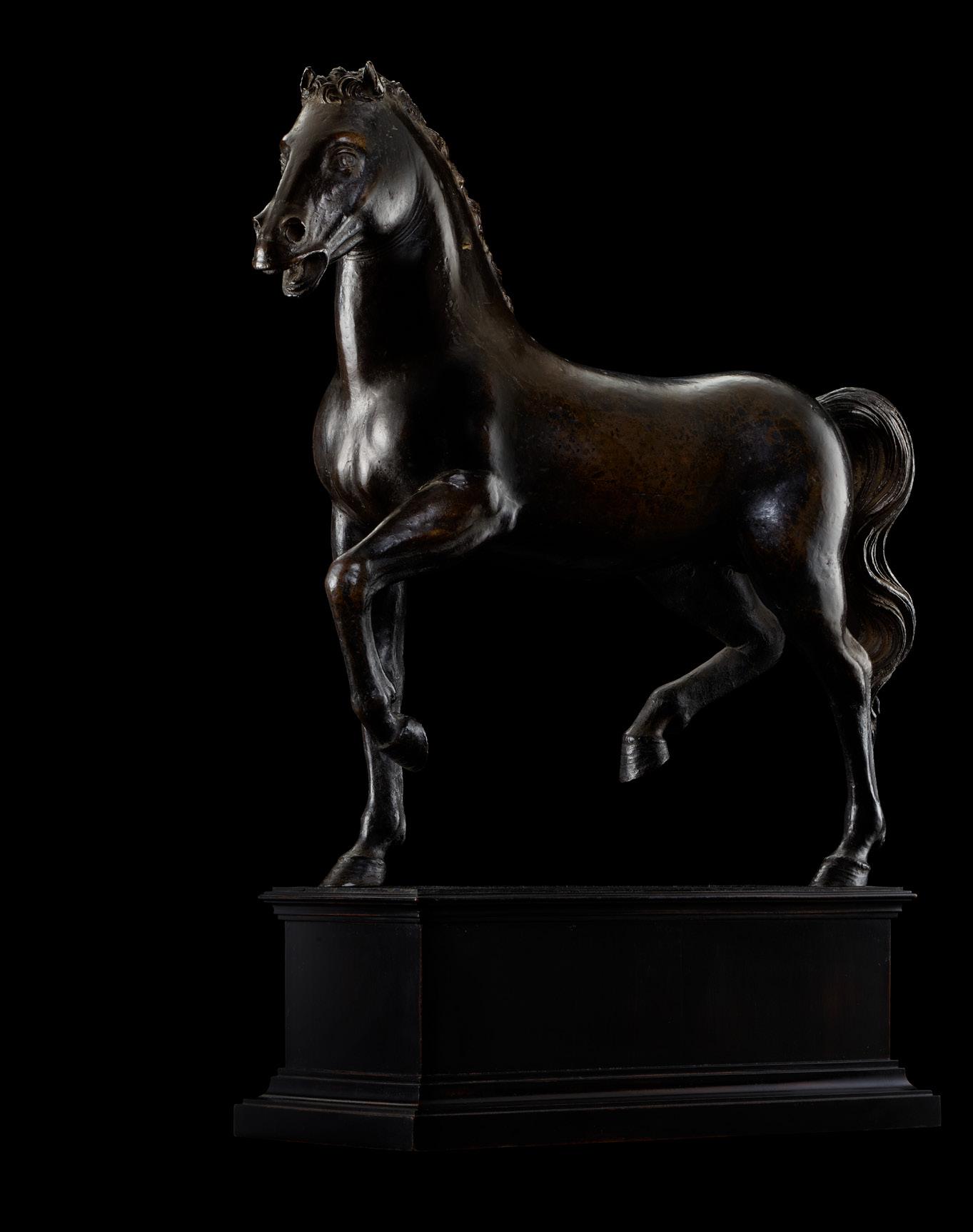
Christ carring the cross
14
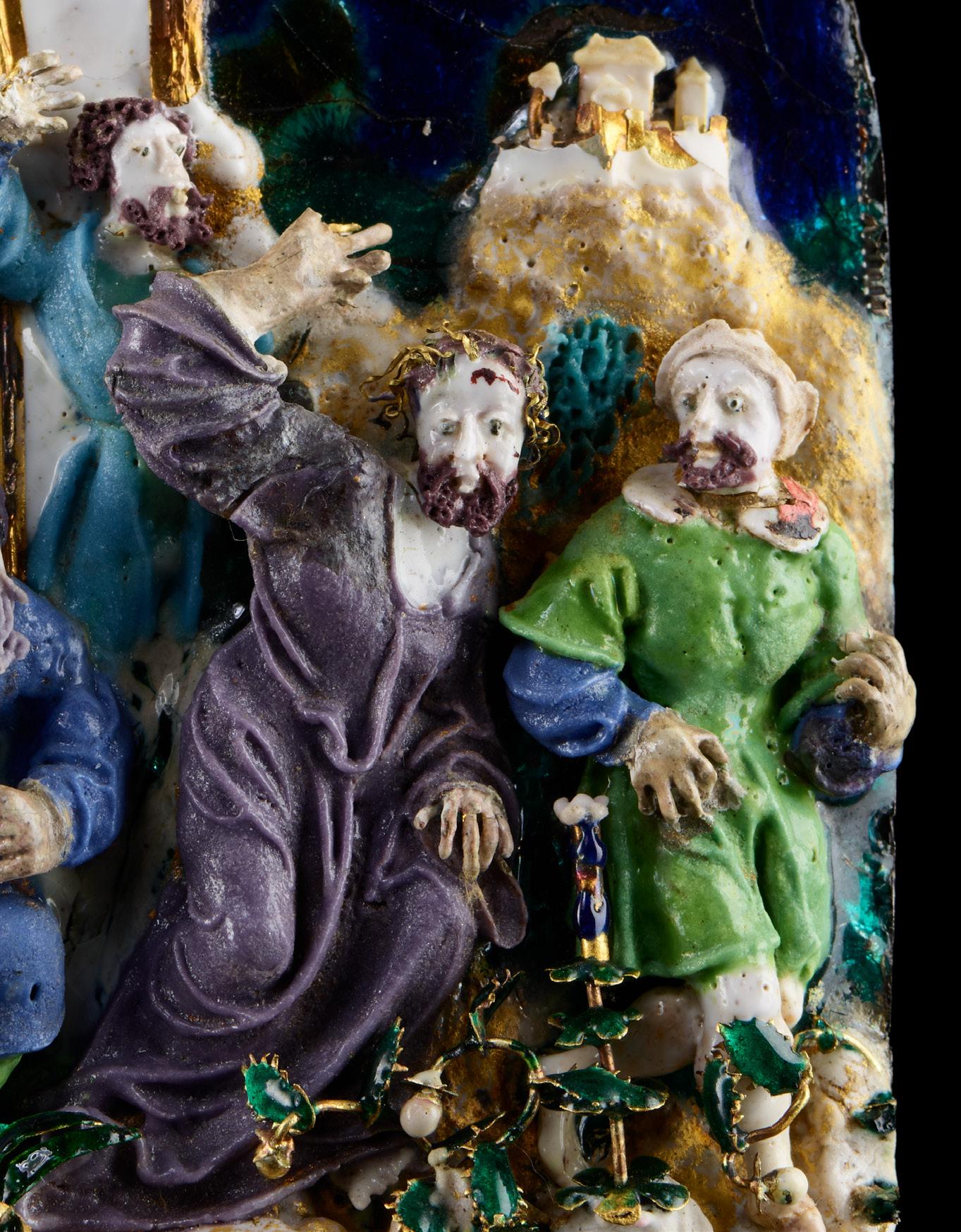
CHRIST CARRYING THE CROSS
Germany, Augsburg or Nuremberg Circa 1520-30
High relief, enameled gold and silver Height: 6.4, width: 4.5 cm
Provenance:
Lord Francis Pelham Clinton Hope, 8th Duke of Newcastle (1866-1941), London; L. Harris, London;
Joseph Brummer, Auction Parke-Bernet, Part I, 20-23 April 1949, no. 705;
Melvin Goodman, Auction Parke-Bernet, 24 April 1969;
Collection Paul W. Doll jr., New York, until 2020.
Exhibition: Decorative Arts of the Italian Renaissance 1400-1600. The Detroit Institute of Arts, 1958-59, cat. no. 349 (as Italian around 1500); On loan to The Baltimore Museum of Art, 1962-68. Literature: Burlington Fine Arts Club. Catalogue of a collection of European Enamels, 1897
Steingräber, Erich. ‘Süddeutsche Goldemailplastik der Frührenaissance’ in Studien zur Geschichte der europäischen Plastik, Festschrift Theodor Müller, 1965, Kurt Martin, Halldor Soehner, Erich Steingräber, Hans R. Weihrauch (eds), Munich 1965, pp. 223-33, fig. 16.
Related literature: Müller, Theodor, Steingräber, Erich. ‘Die französische Goldplastik um 1400’ in: Münchner Jahrbuch der bildenden Kunst, Staatliche Kunstsammlungen, Zentralinstitut für Kunstgeschichte (eds.), 3rd series, vol. V, pp. 29-79, Munich 1954.
The relief depicts Christ in a purple robe kneeling under the weight of the Cross that has since been lost. He is just leaving the city of Jerusalem on the way to Mount Golgotha where the crucifixion is to take place. Two figures in the group on the far left are the Virgin Mary and St. John, standing below the arch of a building. They and three more companions are dressed in violet, blue, turquoise and green robes, all contributing to the dynamic colouration of the relief. In the background is a hill with a castle on top, above which is a translucent blue sky. The vegetation in the foreground is modelled in the round.
The relief was made using the ronde-bosse enameling technique. In such works, a goldsmith creates the figures out of gold or silver (hammered or cast) and then coats them with a glass paste that is then melted to form enamel. The figures would then be placed on a silver or gold plate, on which the coloured, mostly translucent glass forming the background is melted between gold bars. The colour palette of our relief ranges from transparent blue and green for the background, to opaque white for the faces and turquoise, cobalt, purple and green for the robes. These precious shimmering colours give the small relief an incomparably elevated character; even the curly hair is made of gold shavings.
14
